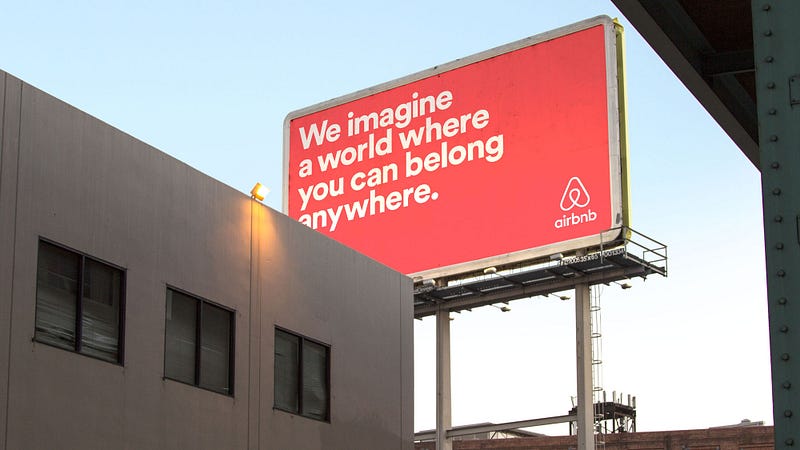The best business strategies — I mean the ones that can truly change the game forever — all have a handful of qualities in common.
You should already have the basics of a good strategy down. Eric Jorgenson recently published a great roundup of strategy frameworks for Evergreen (I recommend reading) and it got me thinking about the lesser discussed, more qualitative factors that separate good strategy from killer strategy.
Good strategies make the most out of the playing field. Killer strategies change the field altogether. If your business or technology has the potential to redefine the norm, then check your strategy against these five factors to see if you’re pushing your framework far enough.
1. Killer strategies place bets
Visionary founders have a hypothesis about where the world will be in 5, 10 or 20 years and place their bets on that vision. You can solve a problem that exists today, but that doesn’t take into account the fact that your target audience is dynamic and always changing. Our cultures and beliefs are evolving with increasing momentum, and great businesses are built around a forward-looking point of view.
That means inherent risks are involved. Placing bets on the future should feel risky. WeWork has made huge bets on the future of how we define our work lives, where in the world we will be working, how we much we will be willing to pay to work the way we want, and how fragmented the workforce will become as the gig economy continues to replace corporate careers. They’ve even expanded that hypothesis to WeLive.
Ask yourself if your brand strategy dares to look into the future, and if what you see there is informing your approach today.
2. Killer strategies create pressure
Your strategy is often your story. For Snapchat (excuse me, Snap Inc.) the story and strategy are synonymous.
According to Evan Spiegel, “It’s not about an accumulation of photos defining who you are … It’s about instant expression and who you are right now.” If you think Snap’s new Spectacles product is a misguided step into hardware, consider it from that strategic narrative. Spectacles are about reliving memories, not creating a curated online album like every other social network out there.
Snap Inc.’s strategy created pressure to move into a different market. Killer strategies pressure you to make divisive decisions. They pressure you to change your consumer’s behavior and mindset.
They also pressure you to talk directly to audiences that are on your wavelength, and force you to risk not talking to the rest of the world.
They’ll push you to do the impossible. In this case, that means winning where Google Glass failed, with an arguably simpler product no less.
3. Killer strategies create unexpected friends (and enemies)
Apple was the first to borrow luxury marketing principles to sell electronics. That’s why it makes perfect sense for Angela Ahrendts to be where she is today.
By the same token, Snap Inc.’s Spectacle has the potential to unbind the chat platform from smartphones. That places them in a very different competitive set, namely against Apple. Look around and the examples are abundant — Uber and car makers, Netflix and content studios, Amazon and grocers, and so on.
If your strategy is disruptive, then you should already be seeing peripheral industries your brand may be moving into.
4. Killer strategies do not confuse strategy for tactics
A strategy is a lens through which to see the world. It’s an approach that defines your actions, processes and decisions. It is not actions, decisions or practices in and of themselves. Those things are called tactics, and I’ve seen far too many companies confuse the two.
Even the big names make that mistake. Four years ago, analyst Patrick Moorhead wrote his reactions to a Yahoo! earnings call where CEO Scott Thompson outlined a 6-point plan to get the company back on track. “When I looked at the list, they all made sense as operational principles or even action items… unfortunately, operating principles or action items aren’t a strategy.”
For Moorhead, the big question behind strategy is Where does a company intend to win? “Yahoo! needs to lean into something.”
You, too, need to lean into something. Look at your tactical plan and see if you can identify the guiding principle, the North Star that ties every action together. There should be a strong and unique assumption behind those decisions.
5. Killer strategies solve many business problems with a few solutions
Your strategy shouldn’t be reactive. Killer strategy is not about spotting a group of problems and finding individual solutions for each within your product. That’s ultimately shortsighted, and often a loser’s game.
You have to get your head out of the current construct and see things from a new vantage point. Einstein said, “We cannot solve our problems with the same level of thinking that created them,” and that’s a perfect way to encapsulate how bright founders mold big ideas.
If you have a clear hypothesis of how the future will be different, then your business should be creating the new playing field in which you will operate. It’s not just about developing a new market. It’s about changing the rules so that things that were once business problems are no longer problems in your new context.
When Airbnb came out with a new visual mark and identity two years ago, they simultaneously launched their “Belong Anywhere” campaign. Despite the jokes and drama, it worked. It worked because it was more than a mere marketing push. It solved a host of challenges for the brand.

A compelling narrative like “Belong Anywhere” immediately mobilized local communities. In NYC, especially, Airbnb has reached out to hosts in grassroots efforts to help push back on impending hotel taxes. The money and resources Airbnb spends on dealing with resistant local governments is a significant business problem, and a new story helped favorably frame the fight in the company’s favor among pivotal communities.
With major investor pressure to rapidly grow to mainstream scale, Airbnb can’t afford to be a niche product that rich millennials use. This new identity succinctly speaks to both would-be hosts and guests. It communicates the brand experience and sets a very clear expectation that a mainstream traveler can understand without alienating their core audience.
Perhaps most importantly, “Belong Anywhere” immediately sidelines every competing hotel. In this story, there‘s no comparison between the products. Hotels are a place to stay. Airbnbs are a place to live out special moments. Cost, convenience and technology aside, these are suddenly two very different offerings.
Airbnb forces the user to define travel along an entirely different set of metrics that hotels have no hope of adhering to. Citizen M can have amazing, inviting common spaces that you never want to leave, but I’ll never book a room there when I go on my longer personal travels. Airbnb holds the promise of understanding new worlds. Hotels can only talk about amenities.
Your strategy must also move you above and beyond the obvious players, into a new territory where incumbents can’t follow. That’s the most effective way to solve many business challenges with a handful of smart, resourceful solutions.
I don’t think strategies or identities, or even brand stories are made up… meaning it’s not a creative process where you tie disjointed concepts together. I think the bones of a killer strategy are already there. It’s our job to dig and dig into the space until we unearth it.
Like George said, “There’s always money in the banana stand.” If you pay attention and doggedly search for the true elements, you’ll find them. The process, if done right, always feels like a discovery at the end of a long excavation. The pieces fit together as if designed that way.
Keep digging until you find it.


